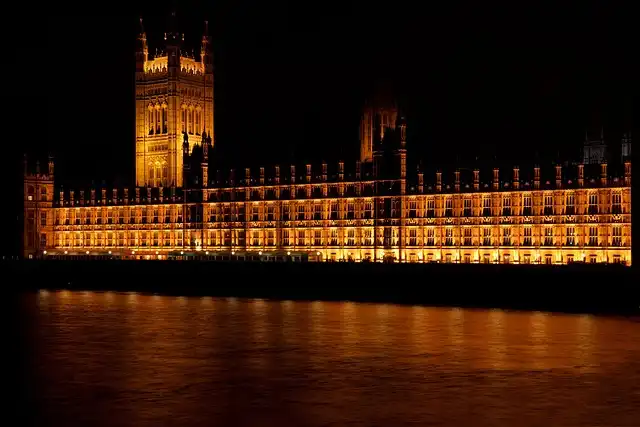“The Second Time Around”: Intimacy, Memory & Unspoken Grief

Jack Howard's The Second Time Around explores unspoken grief & intimacy in a rain-soaked London cafe. The film emphasizes subtle gestures, silences, and the courage to confront the unsaid within human connection. Memory, regret, and hope linger.
Bipasha Bhattacharyya is a graduate in liberal arts, with a deep interest in cinema, culture, and imaginative narration. Her job often explores the crossways of memory, identification, and national politics on display, mixing critical insight with a solid narrative voice. She relies on the power of film as both art and activism, and uses her writing to question, reflect, and reimagine the globe it represents. Past film objection, she also creates innovative duplicates and campaigns that mix narrative instinct with cultural insight. Whether it’s a dramatically observed review or a punchy campaign line, her writing carries the exact same intent: to question, show, and reimagine the globe with stories that matter. Bipasha additionally composes for Reborn India Film and News Faucet One
From the minute Elle (Hannah Onslow) is closing up for the evening and is joined by the mysterious older lady (Caroline Goodall), the movie rejects to ease. Below, the film insists that love is not always in the climactic confessions or the grand gestures however in the peaceful recommendation of another’s existence, in the common recognition that memory, pain, and hoping do not constantly demand expression, that some realities stay in the areas in between words, in the sticking around fragrance of tea, in the almost invisible tremor of a hand reaching throughout a table.” The Second Time Around” isn’t just a movie, it’s an affirmation about what movie theater can do when it depends on the audience with subtle, human weight. Hannah Onslow and Caroline Goodall control the screen in methods that are both extreme and quiet: their gestures, silences, and gazes lug backgrounds that discussion can not catch, but sometimes the film teases with sentimentality, endangering to damage that accuracy. She thinks in the power of film as both art and advocacy, and utilizes her writing to inquiry, mirror, and reimagine the world it portrays.
The Power of Unspoken Communication
And in this cautious, practically medical attention to the infinitesimal, the glimpse, the pause, the hesitant activity, the film recommends that the 2nd possibility is not a rerun of missed chances but a battle with oneself, a twelve o’clock at night reckoning with desires, anxieties, and the residues of love that continue to form assumption long after words have failed.
Jack Howard’s “The Second Time Around” seduces you right into its rain‑soaked London coffee shop not via spectacle but through the exquisitely calibrated obscurity of human pain. From the moment Elle (Hannah Onslow) is closing for the evening and is signed up with by the mystical older woman (Caroline Goodall), the movie rejects to reduce. It does not tell you every little thing, and that is its strength: Howard’s selection to withhold– information of the older lady’s identification, the full weight of Elle’s past, the precise boundary in between memory and possibility– makes the short not just a story but a mirror for your very own overlooked regrets.
It is in this quiet, almost invisible encounter that the film lays bare an extreme idea: that intimacy is much less concerning the narrative arc of love and even more regarding the nerve to deal with the unsaid, to occupy moments of vulnerability without the obsession to resolve them, to identify that hoping can be a space to witness, to hold, to understand, which the act of just existing for another person, without explanation, without option, can itself be a type of love, as deep, as vulnerable, and as everlasting as the unspoken ache that draws Elle and the older woman together in the dying light of a coffee shop.
Elle’s doubt as she takes into consideration allowing the older lady in is not merely an unwillingness to share room however a cautious calibration of depend on, a recognition that affection can be both a concern and a balm, that vulnerability requires a reckoning with past injuries that may never totally recover. The older lady’s silent inquiries about lost enthusiasts, concerning what could have been, concerning the pains of “what if,” are not simply concerns but mirrors showing the concealed shapes of Elle’s own wishes and remorses, and the act of paying attention comes to be an act of courage, of daring to encounter the self that has actually been formed as a lot by absence as by visibility.
“The Second Time Around” (2025) emerges like a whispered confession in the rainfall, a brief film that sticks around in the rooms in between what is claimed and what is really felt, between the world we see and the one we keep in mind. Jack Howard, stepping away from his comical origins, shapes this moment of experience in a manner that feels like both a guarantee and a check out from the past: the drizzle, the darkened pavement, the sigh of neon and streetlamp outside a little London coffee shop, all come to be greater than establishing– they are mood, they are memory.
London Cafe: A Setting of Memory and Mood
Onslow’s performance is built in stops briefly: the means she sets down a teacup with a little excessive force, sticking around on the audio resembling in the near‑silence; the method she folds her layer over a chair, drawing heat in around her; her lips parting, yet no words coming. Goodall’s visibility bets Elle’s in those moments: the older female talks in splits, time hefty in her voice, her words in some cases tremulous, occasionally unnerving. In between them, motions matter greater than speeches. Light swimming pools under lamps, the rainfall locates windows, and steam rises.
Elle and the older female sit across from each other in the dimming heat of the coffee shop as the day hemorrhages right into evening, their conversation a delicate latticework of half-uttered admissions, silences that speak louder than sentences, and the silent hum of closing time that makes their words intimate both really feel and transient, as if they are suspended in an area outside ordinary hours. Every time out, every sip of tea, every look towards the window or the umbrella resting against the chair carries the weight of unspoken backgrounds, of lives stayed in parallel yet never totally converging, and it remains in this cautious orchestration of little gestures that the movie discovers its subtle power.
“The Second Time Around” isn’t just a movie, it’s an affirmation concerning what cinema can do when it trust funds the audience with refined, human weight. It does not need surges, contrived story spins, or special motions to make you hurt; it requests perseverance, attention, and emotional sincerity. Jack Howard’s shift from funny to this sort of intimate, practically claustrophobic vibration reveals a filmmaker going to take dangers, yet it’s likewise a suggestion that risks can be irregular, there are moments where the pacing drags, where the manuscript leans also greatly on repeating, and yet also those imperfections feel deliberate, like hesitation is a texture, not a flaw.
Flaws as Texture: An Anarchic Approach
Hannah Onslow and Caroline Goodall dominate the screen in manner ins which are both extreme and quiet: their motions, silences, and glances lug histories that discussion can not catch, yet often the film teases with nostalgia, threatening to undercut that accuracy. Howard’s use rainfall, reflections, and dim cafés is fantastic in its persistence on memory’s dampness, no question glittering like light on damp roads. Yet sometimes it risks aesthetic extravagance, advising you that even proficiency can tease with self-consciousness.
The narrative does not tidy despair or nicely deal with wishing, which’s the movie’s adventurous strength, but also for visitors desire momentum, it can really feel sluggish, also penalizing. Still, it remains in these extremely imperfections that the movie ends up being anarchical: it refuses trope, refuses closure, rejects to sanitize the messy facts of human link, insisting that affection is located in the stops, the practically, the unmentioned.
In the opening mins, when Hannah Onslow’s Elle is closing the coffee shop, the wide aspect ratio (2.35:1) provides Howard room to breathe: you see representations in rain pools, the altered glow of road lights, wet asphalt that mirrors Elle’s internal shake. Her eyes capture the coffee shop light– soft, golden, yet flexible none of the edges– as she is reluctant, asking yourself whether the older lady (Caroline Goodall) is a ghost, a memory, or some unrecognized version of herself.
The Weight of Silence and Opportunity
The narrative is easy: a waitress closing up (Hannah Onslow) is confronted by a mystical older female (Caroline Goodall), yet it is the heaviness of glances, the creak of coffee shop doors, the odor of rainfall, that swell right into something mythic in mini. Howard depends on little motions: a hand on a teacup, eyes that move in lamplight, silence attracted out– these become the weight of sorrow and opportunity.
It remains not because of phenomenon however since it refuses to let you leave the same; the lost umbrella, the reluctant smiles, the coffee shop’s half-light, these aren’t visual options, they are instruments for feeling, instruments that make you confront your own regrets, your very own unsaid words. I strolled away unsettled, aware that the movie’s courage is in its restriction, its insistence on blemish, and its refusal to offer easy answers.
In the mundane choreography of pouring tea, glancing at the umbrella, changing the folds of a sleeve, there is a profound narrative unraveling, a story of link that rejects dramatic resolution and instead basks in the tension in between disclosure and discernment. Right here, the movie urges that love is not constantly in the climactic confessions or the grand gestures but in the silent recommendation of one more’s existence, in the common recognition that yearning, discomfort, and memory do not always demand expression, that some facts reside in the spaces in between words, in the lingering aroma of tea, in the practically imperceptible trembling of a hand getting to throughout a table. This scene becomes a reflection on the human ability to live in oppositions: to really feel intensely yet speak sparingly, to approach nearness yet preserve an internal frontier, to hold hope for link without expecting redemption or reconciliation.
Howard doesn’t require showy visual effects; he makes use of peaceful: the coffee shop closing, the door’s click, the dripping water, the shudder of representation in an automobile’s front lights. And when the movie edges toward its close, there’s no clean expose. Instead, Elle seeks out. Perhaps she sees hope, perhaps shame– perhaps merely what she’s been preventing. The moment is unforced, and it agitates. It lingers. To me, the movie is brave exactly in what it keeps. Life does not constantly offer explanations, and grief doesn’t constantly discover resolution. Howard’s virtuosity lies in relying on that the target market lugs their very own unanswered inquiries– and it exists that the ache cuts inmost.
1 character study2 human connection
3 intimacy
4 Jack Howard
5 short film
6 unspoken grief
« Keith Powers & Ryan Destiny: Engagement, Love & Hollywood RomanceDua Lipa’s Radical Optimism Tour: A Pop Spectacle »
